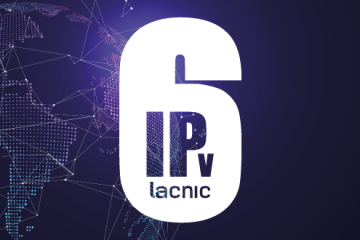In today’s digital age, cybersecurity is more important than ever.
With cyberattacks becoming more frequent and sophisticated, protecting sensitive information is a top priority for businesses and individuals alike.
Recently, a major data breach exposed millions of personal records, highlighting the urgent need for better security measures.
One promising technology that can revolutionize cybersecurity is blockchain. In this blog post, we’ll explore how blockchain can enhance cybersecurity and help protect our digital world.
Understanding Blockchain Technology
Definition and Basics
Blockchain is a type of distributed ledger technology (DLT) that records transactions across multiple computers in a way that ensures security and transparency.
Unlike traditional databases that are controlled by a central authority, blockchain operates on a decentralized network.
Each transaction, or “block,” is linked to the previous one, forming a chain. These blocks are secured using cryptographic techniques, making it extremely difficult to alter any information once it’s recorded.
How Blockchain Works
When a transaction is initiated, it is grouped together with other transactions into a block.
This block is then broadcast to the entire network of computers, known as nodes.
These nodes use consensus mechanisms, such as Proof of Work (PoW) or Proof of Stake (PoS), to verify and validate the block.
Once a consensus is reached, the block is added to the blockchain, and the transaction is considered complete. This process ensures that all transactions are accurate and tamper-proof.
Key Features Relevant to Cybersecurity
Blockchain has several features that make it particularly useful for enhancing cybersecurity:
– **Decentralization:** No single point of control means no single point of failure.
– **Transparency:** All transactions are visible to network participants, promoting accountability.
– **Immutability:** Once recorded, data cannot be altered or deleted.
– **Security through Cryptography:** Advanced cryptographic techniques protect data from unauthorized access. If you’re interested in learning more about how cryptography works or looking for a web scraping tool to extract data from websites, you can check out this helpful resource.
Current Cybersecurity Challenges
Overview of Cybersecurity Landscape
The cybersecurity landscape is constantly evolving, with cybercriminals developing new methods to breach defenses.
Cybersecurity specialist must stay ahead of these threats is crucial.
Common types of cyber threats include malware, phishing, Distributed Denial of Service (DDoS) attacks, and data breaches.
These threats can cause significant financial and reputational damage to organizations, underscoring the importance of robust cybersecurity measures.
Limitations of Traditional Cybersecurity Measures
Traditional cybersecurity measures often rely on centralized systems, which can be vulnerable to attacks.
For example, password-based security is susceptible to phishing and brute-force attacks.
Additionally, detecting and responding to cyberattacks can be challenging due to the complexity and speed of modern threats.
How Blockchain Enhances Cybersecurity
Data Integrity and Immutability
One of the key strengths of blockchain is its ability to ensure data integrity.
Because blockchain records are immutable, it is virtually impossible for cybercriminals to alter data once it is recorded.
This makes blockchain an excellent tool for preventing data breaches and fraud.
For example, in the financial sector, blockchain can be used to secure transaction records, ensuring that they cannot be tampered with.
Decentralized Security
Decentralization is another major advantage of blockchain. By distributing data across multiple nodes, blockchain eliminates single points of failure.
This makes it much harder for cybercriminals to launch successful DDoS attacks, which typically target centralized servers.
Decentralized systems are also more resilient and can continue to operate even if some nodes are compromised.
Identity Management and Authentication
Blockchain can also improve identity management and authentication.
Traditional systems often rely on passwords, which can be easily stolen or hacked. In contrast, blockchain-based digital identities use cryptographic techniques to securely verify users’ identities.
This reduces the risk of identity theft and unauthorized access.
For instance, blockchain can be used to create secure digital passports or identity cards, enhancing the security of personal information.
Smart Contracts
Smart contracts are self-executing contracts with the terms of the agreement directly written into code.
They run on the blockchain, ensuring that the terms are automatically enforced without the need for intermediaries.
Smart contracts can be used to automate security protocols and responses, ensuring that they are executed precisely as intended.
For example, a smart contract could automatically trigger security measures if suspicious activity is detected, enhancing the overall security of the system.
Real-World Applications and Case Studies
Blockchain in Financial Services
The financial services industry has been one of the earliest adopters of blockchain technology. Banks and payment providers use blockchain to secure transactions and protect sensitive data. For instance, JP Morgan’s blockchain-based payment system, Quorum, enhances transaction security by using cryptographic techniques to secure data and ensure transparency.
Healthcare Sector
In the healthcare sector, blockchain can protect patient data and medical records. Healthcare providers can use blockchain to ensure that patient information is securely stored and only accessible to authorized personnel.
For example, MedRec, a blockchain-based system, allows patients to manage and share their medical records securely, ensuring data privacy and integrity.
Supply Chain Management
Blockchain is also transforming supply chain management by providing a secure and transparent way to track goods.
By recording every step of the supply chain on a blockchain, companies can ensure the authenticity of their products and prevent counterfeiting.
For example, IBM’s Food Trust blockchain allows retailers and consumers to trace the journey of food products from farm to table, enhancing food safety and security.
Government and Public Sector
Governments are exploring blockchain to enhance the security of public records and improve digital governance. For instance, Estonia uses blockchain to secure its digital identity system, ensuring that citizens’ data is protected. Blockchain can also be used to create secure voting systems, reducing the risk of election fraud and ensuring the integrity of the democratic process.
Challenges and Considerations
Scalability Issues
Despite its potential, blockchain technology faces several challenges. One major issue is scalability. Blockchain networks can struggle to handle large volumes of transactions quickly and efficiently. However, ongoing research and development are focused on finding solutions to improve blockchain’s scalability, such as sharding and off-chain transactions.
Regulatory and Compliance Challenges
Navigating the regulatory landscape is another challenge for blockchain adoption. Different countries have varying laws and regulations regarding data privacy and security. Organizations must ensure that their blockchain solutions comply with these regulations, which can be complex and time-consuming.
Adoption Barriers
Adopting blockchain technology requires significant changes to existing systems and processes. Organizations may face resistance to change and a lack of understanding about how blockchain works. Education and training are crucial to overcoming these barriers and ensuring successful implementation. Establishing a dedicated development team can also help facilitate the integration of blockchain technology into an organization’s existing infrastructure and workflows.
Conclusion
Blockchain technology offers several key benefits for enhancing cybersecurity, including data integrity, decentralization, improved identity management, and smart contracts. These features make blockchain a powerful tool for protecting sensitive information and preventing cyberattacks.
The future of blockchain in cybersecurity looks promising. As technology continues to evolve, we can expect to see new advancements and innovations that will further enhance its capabilities. Organizations that embrace blockchain technology will be better positioned to stay ahead in the ever-changing cybersecurity landscape.
In Similarly, the adoption of open source applicant tracking systems can greatly enhance recruitment processes by offering customizable and transparent solutions. As cyber threats continue to grow, it is essential for organizations to explore blockchain solutions and stay proactive in their cybersecurity efforts.



